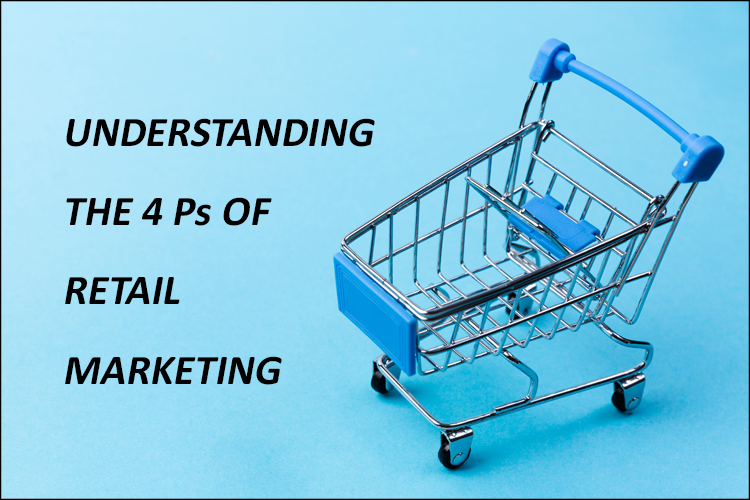Understanding the 4 Ps of Retail Marketing

Retail marketing refers to the process of bringing a product directly to consumers in a retail store. It comprises the planning, promotion, and presentation of the commodity. Having a unique product is just the initial step; the additional ingredients of retail marketing involve luxurious packaging, competitive cost, and sales campaigns.
The 4 Ps of retail marketing are:
- Product
- Price
- Place
- Promotion
Let’s dive into the details.
1. Product
The first ”P” seems clear-cut. Before you plunge into the marketing process, you need to have a product to market in the first place. Now, this product can be both physical or non-physical, but anyway you need to categorize it into a tidy unit. And you can do that with packaging.
Your product must have packaging
The majority of the new products fail because of three primary reasons – poor quality, deliverance, and lousy packaging.
Tiffany and Co.’s iconic packaging has made its color recognized as “Tiffany Blue.” Of course, it doesn’t work for every brand, but it does set some guidelines that can help you create a reliable packaging for your brand.
- You should know your audience demographic.
- Develop cheap packaging into chic and personalized.
- Take eco-friendly options into consideration.
2. Price
You can get to grips with pricing effortlessly using the right tools. However, you need to consider a lot of aspects, including profit, overhead expenses, demand, competitors, market conditions, and product positioning. You must choose the right pricing to optimize your sales.
The two most common pricing techniques are cost-plus pricing and value-based pricing.
- Cost-plus pricing
This involves deciding a break-even price for your product and adding a margin for each unit on the basis of how much profit you want. The cost-plus pricing method is used for products or services that remain unaffected by competition or market changes.
Since this method does not involve your or your competitive product’s value, this is not an ideal strategy for retail items.
If producing a can of mango juice costs only 50 bucks, and you add on one dollar, your product’s price will still be far too less because customers are paying double for your competitor’s offering.
- Value-based pricing
To account for this, you must consider value-based pricing. This method involves evaluating the worth of your product for the consumers. When it comes to niche markets and fashion, this strategy can appeal to your audience’s emotions. It is most suitable for products that have changing levels of demand and value like Adidas Yeezy Sneakers by Kanye West.
This is the best strategy more likely than not to utilize in retail as it allows for more prices, therefore more profits. For example, Apple iPhones might cost the same to make as other android phones, but they are sold at higher prices because the audience perceives it as valuable.
3. Place
Even if you have the best product on the planet, but it is out of your target audience’s reach, it is all for nothing.
Your products will be presented in front of your customers by the distribution channels. When choosing these channels, you must know where your target consumers mostly shop from. For example, while you are selling your homemade corn flakes at a local market, Kellogg’s is selling it through large wholesalers.
Although here, it might look very straightforward, getting your product in front of the retailers in the first place is not a cakewalk. Here are three simple tips that can help you get your product in stores:
- Master your packaging
- Know the retailer and see how your product will fit
- Practice your pitch more and more
4. Promotion
The last P is Promotion, where retail marketing meets field marketing. When you are done with the product, price, and place, it all comes down to engaging with your customers and triggering their interest in your offering.
Promotion can be done in multiple ways from traditional advertising (like Tv and newspaper ads) to influencer marketing. Two things that all advertising methods require are a deep understanding of your target audience and the best ways to reach them.
However, this principle is always on the move because when it comes to creative promotion, brands keep on outrunning each other. However, some tactics like face-to-face marketing remain on standby.
These were the four Ps of Retail Marketing. Now all you need to do is accurate execution of these principles for successful retail marketing. Let us know how this works out for your brand and products in the comments below.
